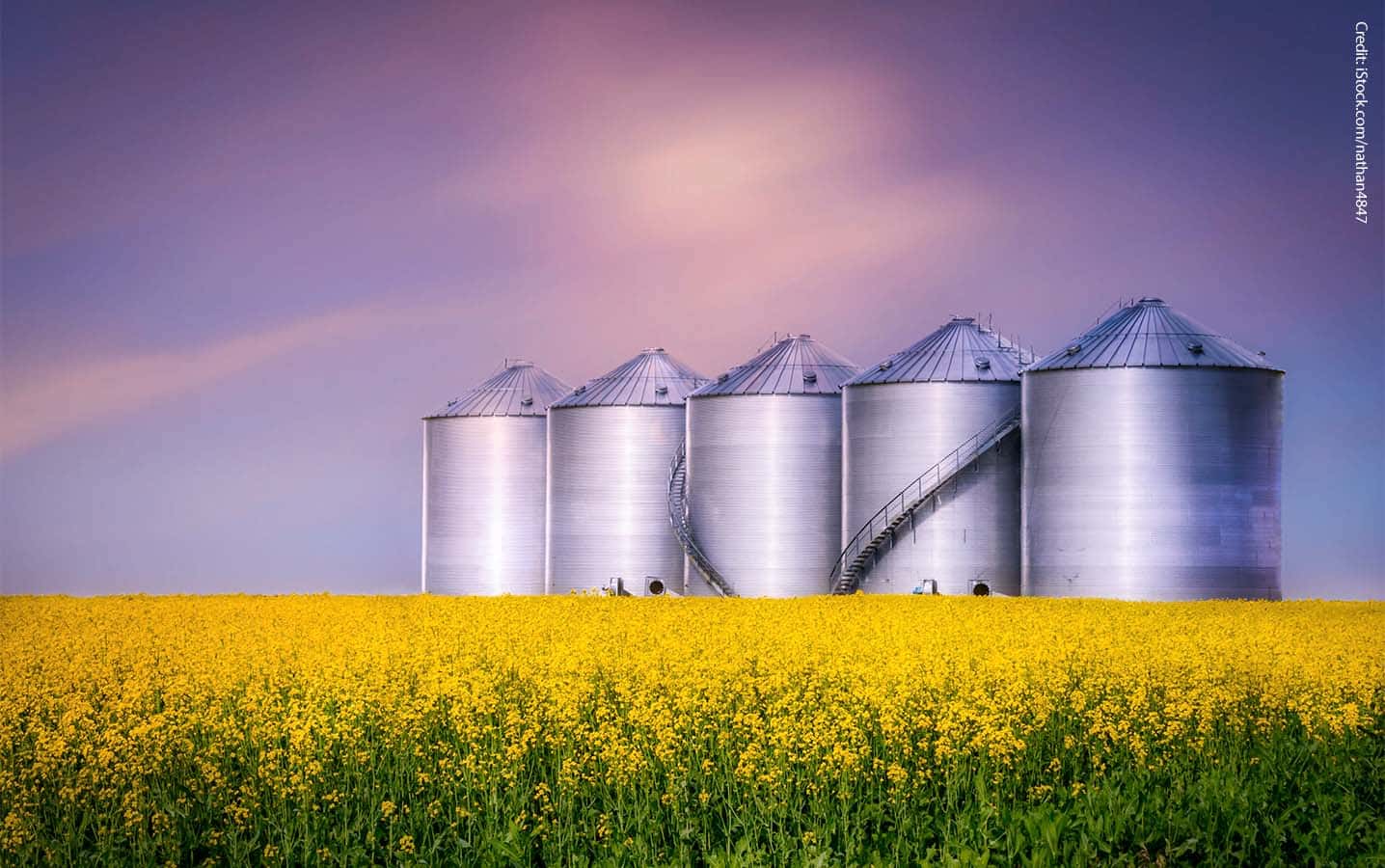Risk factors for canola storage
Canola storage studies featured on the Canola Research Hub describe considerations for canola with different oil content, stored during summer or winter, in larger bins, in grain storage bags, and dried with natural air. The research described below offers the best recommendations for
each of these situations.
A study titled ‘Storage and handling characteristics of new varieties of high oil content canola’ by Digvir Jayas out of the University of Manitoba investigated canola with low (less than 42.5 per cent) and high (about 45 per cent) oil content. The overall finding was that canola at any oil content keeps its high quality longer when stored at lower temperatures and with a lower moisture content.
Jayas also completed two consecutive studies on the ‘Feasibility of bag storage system for canola under Prairie conditions’(part 1 and part 2) which determined that dry canola seeds can be safely stored for six to eight months in bags, but canola at 12 per cent moisture should only be stored in bags temporarily.
Joy Agnew’s ‘Determining best practices for summer storage of canola in Western Canada’ (part 1) project out of the Prairie Agricultural Machinery Institute (PAMI) measured grain temperature, relative humidity and airflow rates on three 4,000-bushel, 18-foot diameter bins of canola. The study compared three different management practices – aeration, grain turning and leaving it alone –for dry canola (six per cent moisture) that was frozen over winter. The overall result:
- As winter transitions into summer, it is recommended to monitor the temperature profile in canola bins for rapid increases which can indicate spoilage and to have a plan in place to move the grain if this occurs and not to turn or aerate. As well, aerating and turning grain to warm up canola stored throughout a cold prairie winter is not necessary.
Agnew’s subsequent ‘Determining best practices for summer storage of canola in Western Canada (part 2)’ study, utilized canola with nine per cent moisture content. This study concluded:
- Leaving bins alone resulted in the most stable and favourable storage conditions throughout the summer months, provided the canola is dry (<10 per cent moisture content) and uniformly frozen (to less than -5°C) going into the spring months.
- Canola should be monitored frequently when it is stored to minimize the risk of grain spoilage.
On the topic of aeration, Joy Agnew and Charley Sprenger conducted the study on ‘Defining best management practices for using supplemental heating with natural air drying’. One trial compared the effect of airflow rate on supplemental heating with natural air drying (NAD) compared to NAD without added heat. It used bench-scale test bins, and assessed the rate of drying with supplemental heat at three different temperature increases. Overall, supplemental heating for NAD systems was reported to be a potential lower-cost alternative to heated air drying, to extend the drying season. However, careful management is required to keep operating costs comparable to that of a dedicated dryer system.
The ‘On-farm canola storage research in large bins’ project led by PAMI’s Lorne Grieger investigated large bins for airflow rates and static pressures from common aeration fans. It also compared airflow uniformity, and grain pressure distribution on the bin floor. The large-bin study found that airflow/static pressure recommendations developed for small bins are effective in conditioning canola for safe long term (over five months) canola storage in large bins. However, the fan requirements and grain monitoring practices may need to be adapted for larger bins.
Full reports for these studies have more detail. To find these reports and video interviews with the lead researchers, please search the Canola Research Hub at canolaresearch.ca.





